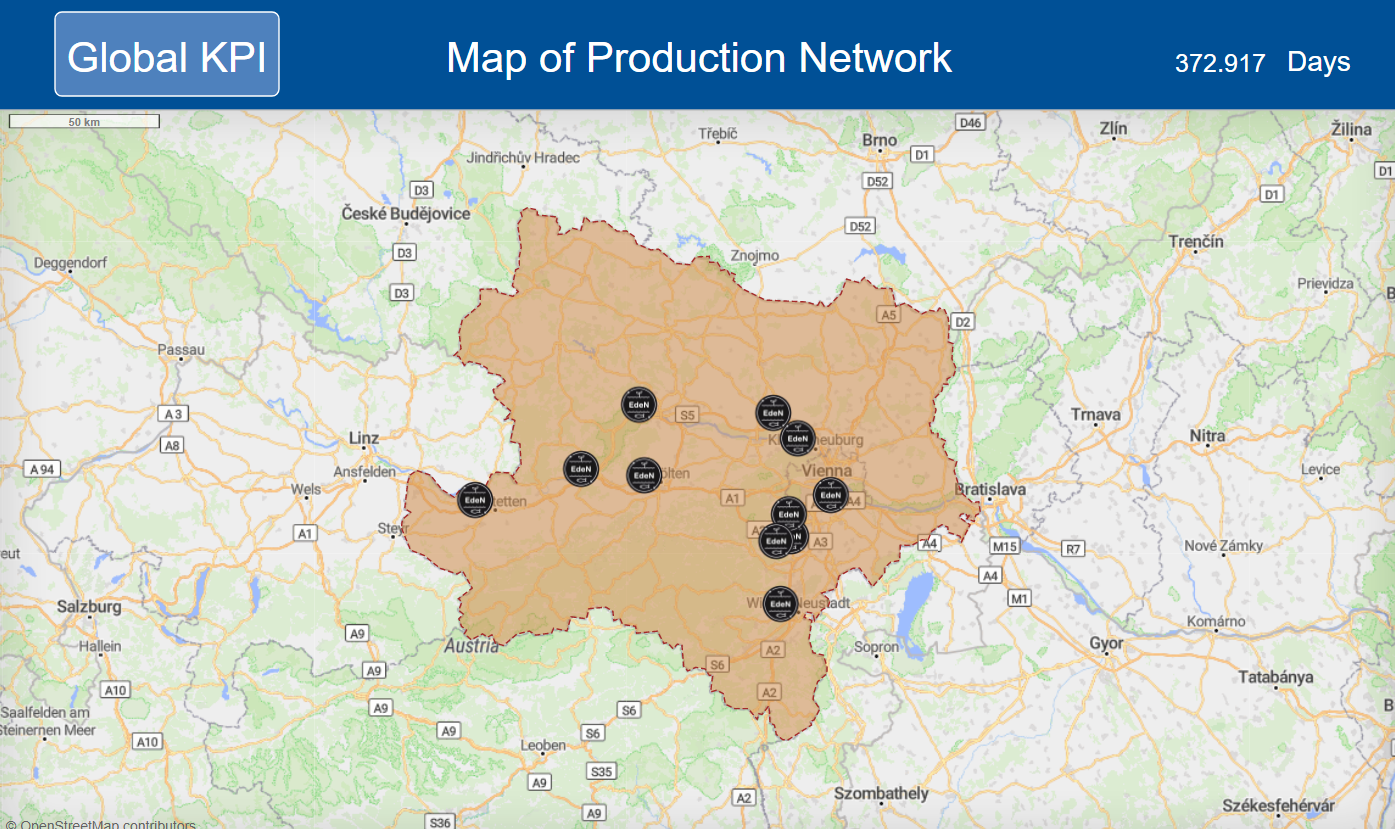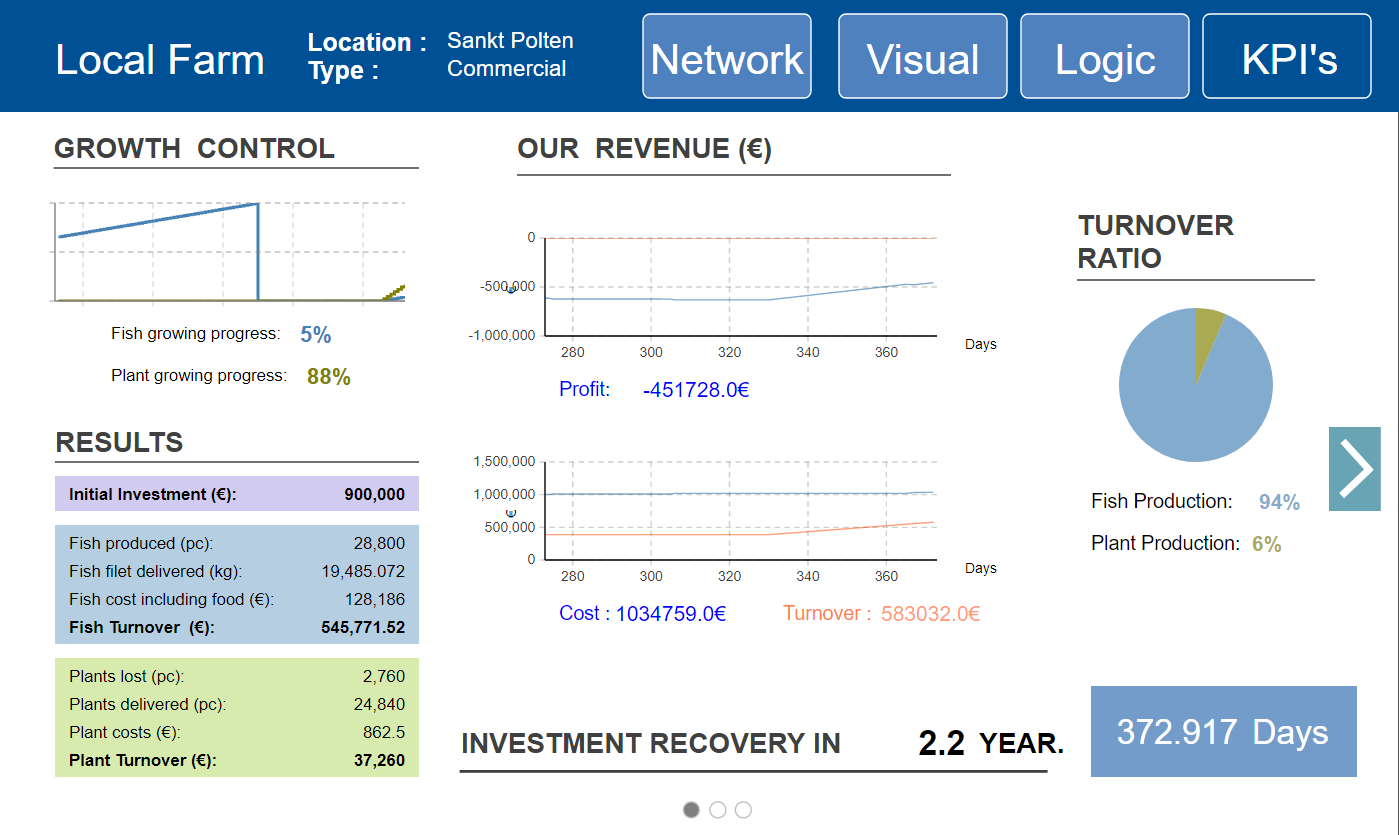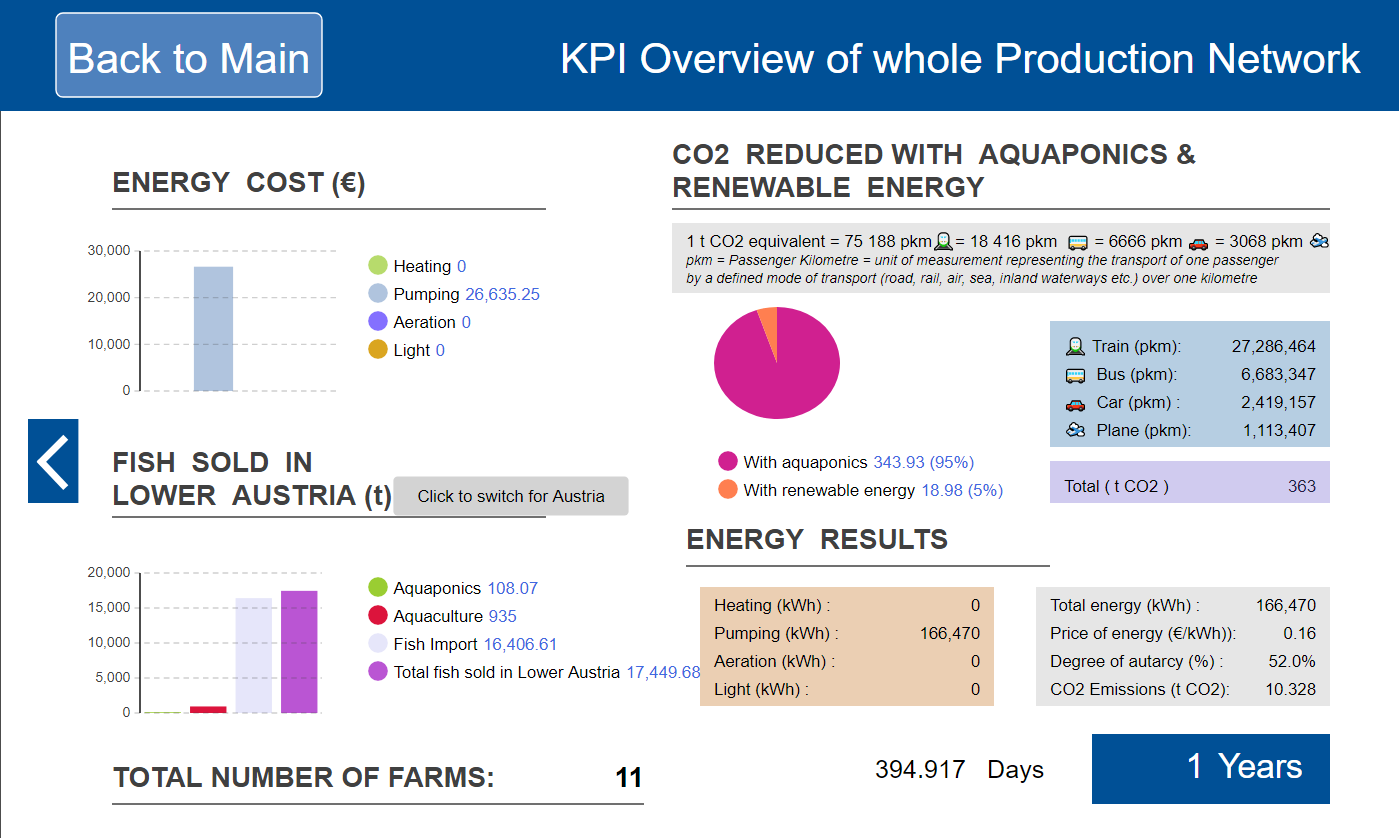This blog posting was written by European-Project-Semester students working on the simulation of aquaponics systems in the winter semester of 2024:
Introduction: Why Use Simulation for Aquaponics?
Simulation is a powerful way to model and understand complex systems. It allows us to test different setups, analyze their performance, and predict outcomes without first building physical systems. For aquaponics — a farming method combining fish farming (aquaculture) with plant cultivation (hydroponics) — we can experiment with factors like fish stocking density, plant growth, and energy use to design the most efficient and sustainable farms possible.
As part of our semester project on Circular Economy, we are working on simulating aquaponics systems using AnyLogic, a simulation software.
How Does the Model Work?
Our aquaponics simulation is designed to provide insights into the operation and performance of farms. The simulation includes:
1. A Map of Lower Austria
- The locations of various aquaponics farms are displayed, this offers a regional overview of the system.

2. Farm-Level Details
- A zoomed-in view of a local farm shows the real-time growth of fish and plants over time.
- Production metrics such as fish and plant turnover rates are tracked visually.

3. Key Metrics and Graphs
- Graphs display key performance indicators (KPIs) like:
- Revenue growth over time.
- Energy consumption and costs.
- CO2 emissions from farm operations.
- Profitability based on farm size and production rates.

The simulation also allows users to test "What-if" scenarios by adjusting parameters like farm size, fish-to-plant ratios, and energy costs. This helps identify optimal configurations and predict how changes will affect profitability, efficiency and environmental impact.
Parameters in the Model
Managing an aquaponics farm involves balancing a variety of parameters, which we grouped into two main categories:
1. Modifiable Parameters
These can be adjusted in the Excel file linked to the simulation, making it easy to test different setups:
- Farm Setup: Number and type of farms.
- Fish: Species and quantity of fish (e.g. tilapia).
- Plants: Variety and planting density (e.g. lettuce).
- Costs: Electricity prices and energy consumption rates.
2. Observed Parameters
These are calculated and visualized directly in AnyLogic after running the simulation:
- Production: Fish and plant growth rates.
- Financials: Profit margins, turnover, and revenue trends.
- Environmental Impact: CO2 emissions and energy efficiency.
The Excel link allows users to modify farm parameters quickly, while the simulation reflects the changes in real-time, offering an intuitive way to analyze the results.
How to Interpret the Results
The simulation outputs several KPIs to help users understand the farm's performance:
- CO2 emissions: Monitor and minimize the environmental impact of your farm.
- Energy consumption: Identify where energy use is highest and explore ways to cut costs.
- Fish and plant turnover ratios: Check if you’re maintaining a healthy balance between fish and plant growth.
- Profitability: See how adjustments to farm size, energy use, or other parameters affect financial outcomes.
The simulation provides actionable insights to help farm owners optimize their operations for better productivity and sustainability.
The model assumes linear scaling, meaning a single system with 10m³ behaves identically to 10 systems of 1m³ each. While this simplifies calculations, it doesn’t fully capture the complexities of real-world aquaponics, not taking into account parameters that could hinder or, on the contrary, improve the farm's growth.
Key Takeaways and Next Steps
Our simulation provides a powerful tool for aquaponics farmers, researchers, and enthusiasts. By experimenting with different setups and analyzing the results we can:
- Design more efficient and sustainable farms.
- Optimize fish-to-plant ratios for better turnover.
- Predict profitability and environmental impact before investing in physical systems.
Moving forward, we aim to refine the model by incorporating non-linear scaling effects, expanding environmental factors, and improving the user interface for beginners.
If you’re considering starting your aquaponics farm, this simulation offers a practical and insightful way to test your ideas before making big decisions.
Your Thoughts?
We’d love to hear your feedback or suggestions on our work!